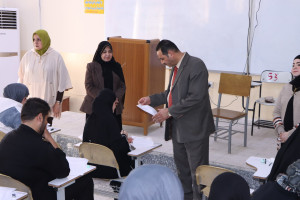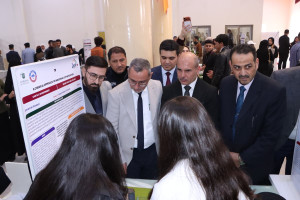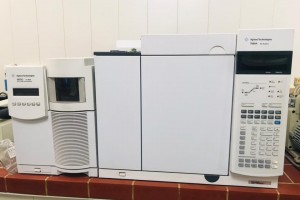
The College of Education for Pure Sciences at the University of Basrah discussed a master's thesis on a diagnostic study of the family of flesh flies in the province of Basrah.
(Diptera: sarcophagidae)
The thesis presented by the researcher (Tahseen Ali Yasser) included
The current study from the beginning of October 2021 until the end of November 2022 to study the Sarcophagidae family of meat flies in Basrah Governorate. It included two diagnostic aspects (phenotypic - molecular) and environmental. A number of non-permanent sites, and eight species belonging to three genera and two families were recorded, namely:
Sarcophaga (Bercaea) africa (Wiedemann, 1824)
Sarcophaga (Liopygia) argyrostoma (Robineau-Desvoidy, 1830).
Sarcophaga (Liopygia) crassipalpis Macquart, 1839
Sarcophaga (Liopygia ruficornis) Fabricius, 1794
Sarcophaga (Liosarcophaga) dux (Thomson, 1869)
Sarcophaga (Phytosarcophaga) destructor Malloch, 1929
Sarcotachina umbrinervis Villeneuve, 1910
Wohlfahrtia nuba Wiedemann, 1830
Of these species, three of them were recorded for the first time in Iraq, namely:
Sarcophaga (Liosarcophaga) dux (Thomson, 1869)
Sarcophaga (Phytosarcophaga) destructor Malloch, 1929
Sarcotachina umbrinervis Villeneuve, 1910
A number of phenotypical characteristics were adopted to isolate the genera and species of the family, such as the shape of the tentacle furunculosis, the system of distribution of hairs and spines on the body (ketotaxy), the color of the terminal rings of the male abdomen, and the male and female stigmas. The species Sarcophaga ruficornis was chosen as an ideal model for the family.
Through genetic diagnosis, it was revealed that eight species were registered, including six belonging to the genus Sarcophaga, one belonging to the genus Wohlfahrtia, and another within the genus Sarcotachina.
The environmental study included determining the effect of temperature and humidity on the annual occurrence rate of the flesh fly insect. May, with a total of 123 samples, followed by April, with 118 insects. The lowest presence of meat flies was recorded in August, which amounted to 44 insects, followed by July, with 57 samples. The study showed that there was a large discrepancy between the presence of species belonging to the family of meat flies, where members of the species belonging to the genus Sarcophaga were recorded. The highest presence during the study period, especially in the months that witnessed a decrease in temperatures, and this is in contrast to individuals belonging to the genus Wohlfahrtia, if the highest numbers of it were collected in the months that witnessed a rise in temperatures.
The thesis showed that there is a great variation in the presence of species belonging to the family of meat flies with significant differences, as the species Sarcophaga ruficornis recorded the highest presence with a total of 398 samples, followed by the species Sarcophaga africa with a total of 212 adults, while the species Sarcophaga destructor and Sarcotachina umbrinervis collected only 6 adults for each of them. The highest number of meat flies was recorded from Shatt Al-Arab station, followed by Al-Hartha station, and the lowest number was recorded at Al-Zubair station.









